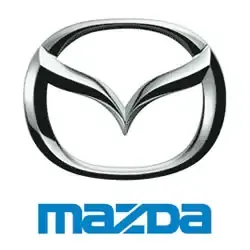Mazda B2500 Tire Pressure
Most common recommended tire pressure for Mazda B2500 is 35 psi based on year of production, trim and OEM tire size, but it maybe different for older models. It is imperative to confirm the exact tire inflation for your Mazda B2500 to ensure safety on the road. Always refer to your vehicle owner's manual for the correct tire pressure designated by vehicle's manufacturer.
Select your Mazda B2500 production year to see its recommended tire inflation.
| Model Year | Front Tires | Rear Tires |
|---|---|---|
| 2001 Mazda B2500 | 35 psi | 35 psi |
| 2000 Mazda B2500 | 35 psi | 35 psi |
| 1999 Mazda B2500 | 35 psi | 35 psi |
| 1998 Mazda B2500 | 35 psi | 35 psi |
Recommended Tire Pressure for Mazda B2500
Ensuring your Mazda B2500 operates with tires inflated to the manufacturer's recommended pressure is crucial for several reasons. First and foremost, it optimizes fuel efficiency. Tires at the correct pressure reduce rolling resistance, meaning the engine doesn't have to work as hard to move the vehicle forward, thus conserving fuel. Additionally, tire longevity is significantly improved when tires are maintained at the proper pressure. Under-inflated tires can overheat and are more susceptible to damage and wear, leading to premature replacement. Conversely, over-inflation can lead to uneven tire wear, particularly in the center tread, reducing the lifespan of the tire. Moreover, safety is a paramount concern; proper tire inflation ensures that the vehicle has the best possible traction and handling characteristics, reducing the risk of accidents. Specially for the Mazda B2500, a vehicle that may be used for carrying loads or towing, correct tire pressure is also essential for maintaining vehicle stability and handling under these conditions. In essence, maintaining the recommended tire pressure in your Mazda B2500 is a straightforward yet vital practice for ensuring the vehicle's efficiency, safety, and longevity.

All listed guides, data and/or calculations are for informational purposes only. TirePressure.com does not warrant or make any representations regarding the accuracy of or the results of the use of this information. Always refer to vehicle owner's manual for the correct tire pressure configuration.